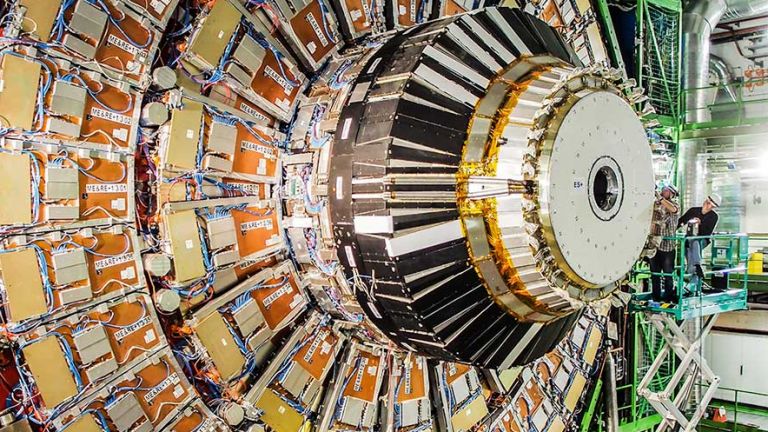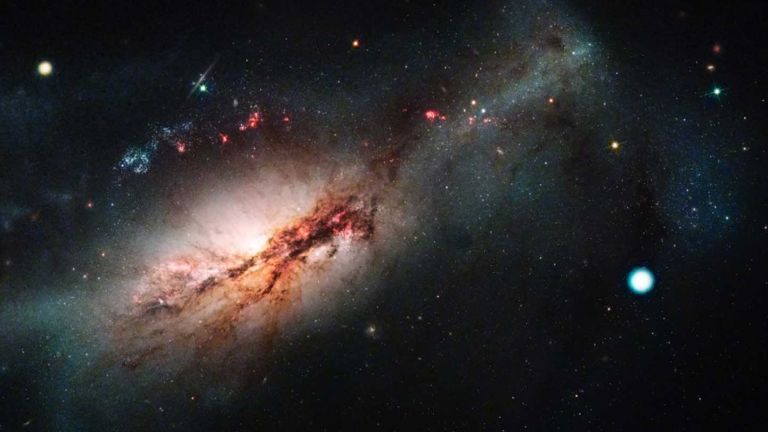PhD Programs
The Department offers graduate programs leading to a Ph.D. in physics and a Ph.D. in physics with an astrophysics emphasis. The key elements in the program are advanced graduate courses and research conducted by students under the close supervision of a faculty thesis advisor.
Resources
The UCSB Physics Department has outstanding resources for both experimental and theoretical research. Well-equipped laboratories in the Physics building are engaged in a broad range of research in the physics of soft and living matter, condensed matter physics (including graphene, quantum materials, and quantum information science), atomic and molecular physics (including quantum emulation, quantum sensing, and probes of physics beyond the standard model) and the development and construction of innovative detector technologies in astrophysics and particle physics. Numerous collaborative efforts within and beyond the department connect these and other areas.
The resources for theoretical physics are outstanding. The world-renowned Kavli Institute for Theoretical Physics (KITP) is located steps from the physics building. The Institute conducts research programs across a broad range of areas of astrophysics, condensed matter physics, fundamental particle physics, nuclear physics, the physics of soft and living matter, string theory, and gravity/relativity, inviting eminent physicists from around the world to participate in these programs for months at a time. All the KITP’s activities are open to Physics graduate students. Microsoft’s Station Q research center located in the California Nanosystem Institute (CNSI) leads a focused effort in the theory of topological phases and quantum computing. These centers provide unequaled opportunities for broad exposure to theoretical physics and its leading practitioners.
Collaborative Facilities
Unique collaborative facilities are a key ingredient of research excellence at UCSB. A high-power, tunable, far-infrared free-electron laser is the center of a broad research program in terahertz phenomena. The California Nanosystems Institute, the Materials Research Laboratory, and Microsoft's Station Q are key on-campus facilities with strong interactions with our graduate program and faculty. The California Institute for Quantum Entanglement promotes collaborative quantum science work with universities throughout California. Off-campus particle physics research is performed at CERN (Geneva), Fermilab (Chicago) and at the Sanford Underground Research Laboratory (South Dakota). Astrophysicists use the Keck telescopes in Hawaii, as well as a variety of other ground-based and space-based observing facilities. The Department has a strong association with the Las Cumbres Observatory Global Telescope Network, a worldwide network of telescopes that is now being constructed and is headquartered near the campus.
Contact
Related Links
Graduate Outcomes
- Core Knowledge: Students should be able to
-
Apply the laws of physics in classical mechanics, quantum mechanics, electrodynamics, and statistical mechanics at a level commensurate with current standards in physics. Demonstrate mastery of advanced physics within their chosen subfield. For theorists, demonstrate breadth of knowledge outside their chosen subfield as well. Demonstrate fluency in comprehension of the primary research literature in their chosen subfield.
- Research Methods and Analysis: Students should be able to
-
Conduct primary research literature searches in their chosen subfield. Apply theoretical and/or experimental tools, as appropriate, to make progress in expanding the frontiers of physics knowledge.
- Scholarly Communication: Students should be able to
-
Communicate effectively the results of their research to professionals within their subfield, and within the broader physics community, through both oral presentation and written work.
- Independent Research: Students should be able to
-
Complete an original, creative project that demonstrably advances human knowledge within their subfield.



